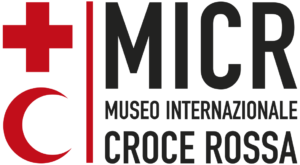This post is also available in: Italiano
collections
The Museum’s permanent collection consists of a large number of relics, surgical instruments, medical equipment, uniforms, relief vehicles, prints and documents that bear witness not only to the origins and evolution of the Red Cross but also to the progress of modern medical science, the development and organisation of relief work and the inception of international humanitarian law.
Are part of the heritage preserved at Palazzo Longhi Hundreds of period photographs and hundreds of photographs of the campaigns of the International Committee of the Red Cross (ICRC) and the International Federation of the Red Cross (FICR), as well as a series of prints on the principles and campaigns of the National Red Cross Societies, including those on hygiene and first aid dating back to the 1930s.
At present, the tour, which is being re-assessed, is on two levels inside the historic Palazzo Longhi and its annexes, which overlook a large porticoed courtyard.
The origins of the idea
The collection dedicated to the Battle of Solferino and San Martino in 1859 documents the tragic circumstances that led to the inception of the Red Cross. Through prints, maps, stretchers, surgical instruments and objects of daily use, the odyssey of the aid provided by the population of the small village of Castiglione delle Stiviere to over 9,000 injured people, without distinction of nationality or uniform, is evoked.
An odyssey that the Geneva entrepreneur Henry Dunant, who witnessed the events first-hand, described in detail in his memoir “A Souvenir de Solferino” theorising for the first time the idea of the future Red Cross. Published in 1862, the book is still one of the most translated books in the world.
The MICR keeps the original first edition – a limited edition, not intended for sale – and reprints in several languages, including the rare 1906 edition in Esperanto.
The collection also traces the early stages of the evolution and spread of the Movement in Europe and the world, from the second half of the 19th century to the beginning of the 20th, and the origins of the Red Cross emblem, from the Geneva Conference of 1863 to the present day.
It is also possible to visit the permanent exhibition Humanity at War, dedicated to the activities of the International Committee of the Red Cross (ICRC) in the world and the CRI National Campaign for the Abolition of Anti-Personnel Landmines.
First aid equipment and uniforms
The MICR holds an extensive collection of first aid instruments, field tools, medical equipment, bullets extracted from battlefield casualties and Red Cross Volunteer Military Corps uniforms, the latter mostly dating from World War I.
The Red Cross Volunteer Nursing Corps
The collection documents the inception of the Volunteer Nurse Corps, known in Italy as Crocerossine, and their fundamental contribution in times of war and peace.
As some of the original posters on display in the Museum attest, the Voluntary Nurses were among the creators of the first health and hygiene education campaigns promoted by the Red Cross as part of a comprehensive programme of prevention and assistance for the population.
Means of transport
The MICR houses one of the most important European collections of hand and horse-drawn stretchers from the mid to late 19th century.
There are also two of the oldest preserved ambulances in Italy still in operation, respectively a 4-cylinder FIAT 507 ambulance from 1929 and a FIAT 521 ambulance 6-cylinder ambulance from 1930.

